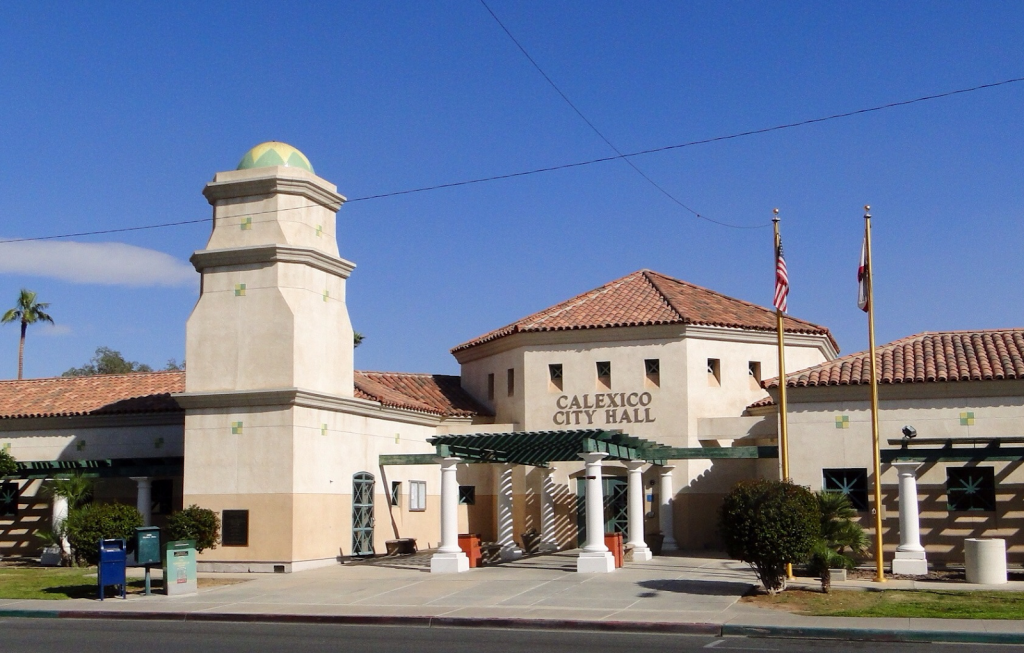written by sharon burns, regular contributor
edited by sarina e. guerra
formatted by justin orsino
Politicians in Imperial County and the border region really seem to love a good ribbon-cutting. Whether it’s a new park bench, a mural downtown, or an “economic development” announcement, you’ll see them in crisp shirts and hard hats, scissors in hand, posing for the photo op. But when the rent comes due? Crickets.
It’s not just rhetoric. The facts show the local housing market has crept upward — quietly, persistently — while political attention has stayed glued to ceremonial gestures.
In Imperial County, the median monthly gross rent was $810 in 2019 (Dept. of Numbers).
By 2024, asking rents across the county had risen 3.3% in a single year (California Housing Partnership).
In the city of Imperial, rents jumped 7.7% last year, adding nearly $100 a month for tenants (Apartments.com).
These increases may sound modest to someone in Los Angeles or San Diego. But in a region where wages lag and affordable housing options are scarce…
Every percentage point
Matters.
Inflation compounds the problem. Imperial County’s Consumer Price Index (CPI) rose 3.8% in 2024 (SCRHA), and under state law (AB 1482), landlords can raise rents by 5% plus CPI, up to 10%. For many households already spending half their income on rent, even a “legal” increase can push them to the breaking point.
Across California, the pattern is the same: rents rose 38% from 2010 to 2023 while wages failed to keep pace (Legislative Analyst’s Office). The Public Policy Institute of California found rental vacancy rates dropped nearly 2 percentage points over the same period. Today, 79% of extremely low-income households statewide spend more than half their income just to keep a roof overhead (California Housing Partnership).
Local Politics reflect the Imbalance.
In Imperial County’s Comprehensive Economic Development Strategy, parks and beautification projects get top billing. Rising rents appear only in the appendix.
The 2024 Affordable Housing Needs Report acknowledges that rents climbed again — but devotes far more space to tourism and capital projects than tenant protections.
In El Centro and Calexico, ribbon-cutting ceremonies for murals, street improvements, or park upgrades dominate the local press. Rent relief and eviction protections rarely make the news.
The scissors stay sharp. The cameras keep rolling.
And the rent checks
Keep Climbing.
These aren’t just numbers — they’re people. Local newspapers like the Calexico Chronicle, Holtville Tribune, and CalMatters have all covered housing struggles in the Valley. I believe those voices need to be amplified — alongside the ideas that could turn stories of loss into stories of change.
In the Desert Shores Trailer Park, dozens of tenants were told to fix violations or face eviction. Many lived on fixed incomes, unable to meet sudden demands (Calexico Chronicle, Jan. 30, 2022).
By mid-2022, about 30 tenants there were withholding rent, arguing that management failed to maintain livable conditions (Holtville Tribune, July 28, 2022).
In Calexico, a city-owned low-income complex was destroyed by Tropical Storm Kay, displacing residents permanently because repairs were deemed too costly (Calexico Chronicle, Sept. 28, 2022).

During the pandemic, evictions in Imperial County drew state scrutiny. “People being evicted from their homes is a public health and safety problem,” said Adriane Bracciale of California Rural Legal Assistance in El Centro (CalMatters, July 23, 2020).
These stories capture the human cost of our housing crisis. But unlike most press coverage, I won’t stop at the problem. I am committed to pairing these voices with ideas and solutions that could actually work in the Valley.
Some programs exist, though none match the scale of the problem:
- The Imperial Valley Housing Authority manages public housing and vouchers, but waiting lists are long.
- The county offers Tenant-Based Rental Assistance (TBRA), which helps with rent and deposits for low-income households.
- El Centro provides homebuyer assistance and rehab loans.
- The Imperial Valley Continuum of Care offers rent and utility support.
- The county recently funded a 26-unit tiny home project at Imperial Valley College to support students facing housing insecurity.
Helpful, yes…
But not
nearly Enough.
Other regions have tried stronger measures Imperial County could adapt:
- Rent stabilization: Los Angeles caps annual increases on older units.
- Algorithm bans: San Diego outlawed rent-setting software that artificially drives prices up.
- Fast-track zoning (SB 35): Streamlines affordable housing approvals where cities fall behind state housing goals.
- Faith-based housing (SB 4): Lets churches and nonprofits build affordable housing on their land, bypassing many zoning delays.
- Inclusionary zoning: Requires developers to include affordable units in new projects.

Here’s what Imperial County could do:
- Cap the hikes with local rent stabilization tied to CPI.
- Protect tenants with strong just-cause eviction laws.
- Expand assistance through better-funded TBRA and vouchers.
- Build more housing using SB 35, SB 4, ADUs, and inclusionary zoning.
- Enforce and track with a housing board that includes tenant voices.
And some of the most promising opportunities may be right in our neighborhoods.
Most people know the phrase “Not in My Backyard” — when neighbors resist new housing nearby. In 2023, California turned that upside down with SB 4, the…
“Yes in God’s
Backyard” law.
SB 4 allows churches and nonprofit colleges to build affordable housing on land they already own, bypassing zoning hurdles that typically stall projects.
But laws are only tools. Their impact depends on who chooses to use them. Catholic parishes and LDS wards may face too much bureaucracy to act quickly. But Protestant congregations like Victory Outreach and New Creations Mens and Womens homes already serve people in crisis. For them, SB 4 housing wouldn’t be a stretch — it would be an extension of their mission.
If paired with existing resources like the El Centro Day Center, which already meets basic needs, these projects could provide more than shelter: they could provide stability, dignity, and hope. So yes, SB 4 could work here. But only if local leaders and congregations are willing to step through the door that state law has already opened.
The bottom line…
Every year, more Valley residents slip further behind. A 3–7% rent hike may not sound dramatic to outsiders, but for families already spending half their income on rent, it’s devastating.
Ribbon-cuttings are easy. Cutting rent prices is hard. But until our leaders put as much energy into housing solutions as they do into ceremonial scissors, residents of Imperial, El Centro, and Calexico will keep paying the price —
Literally.
Licensed English tutor specializing in high school & college support — elementary students welcome too. ✍️📚








